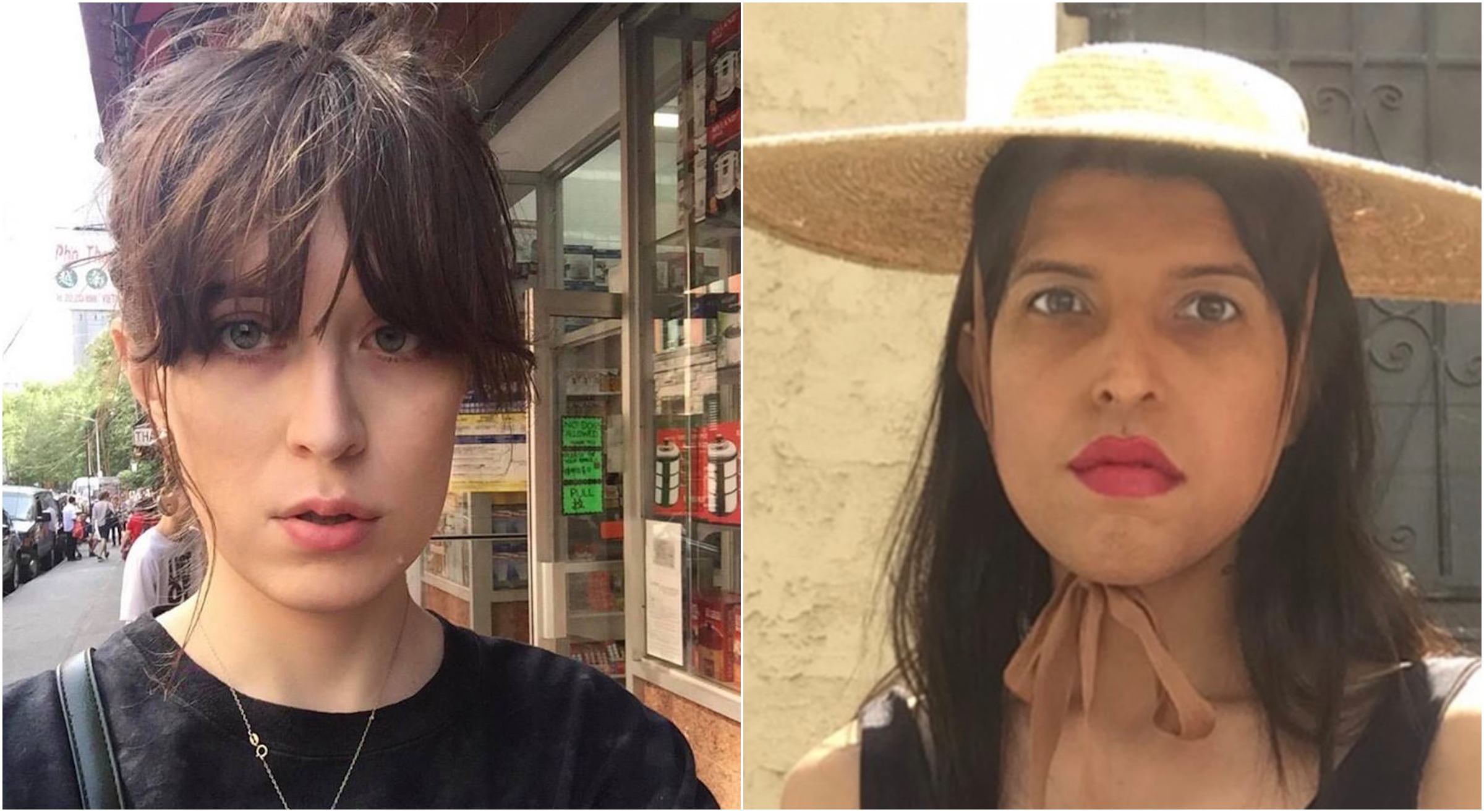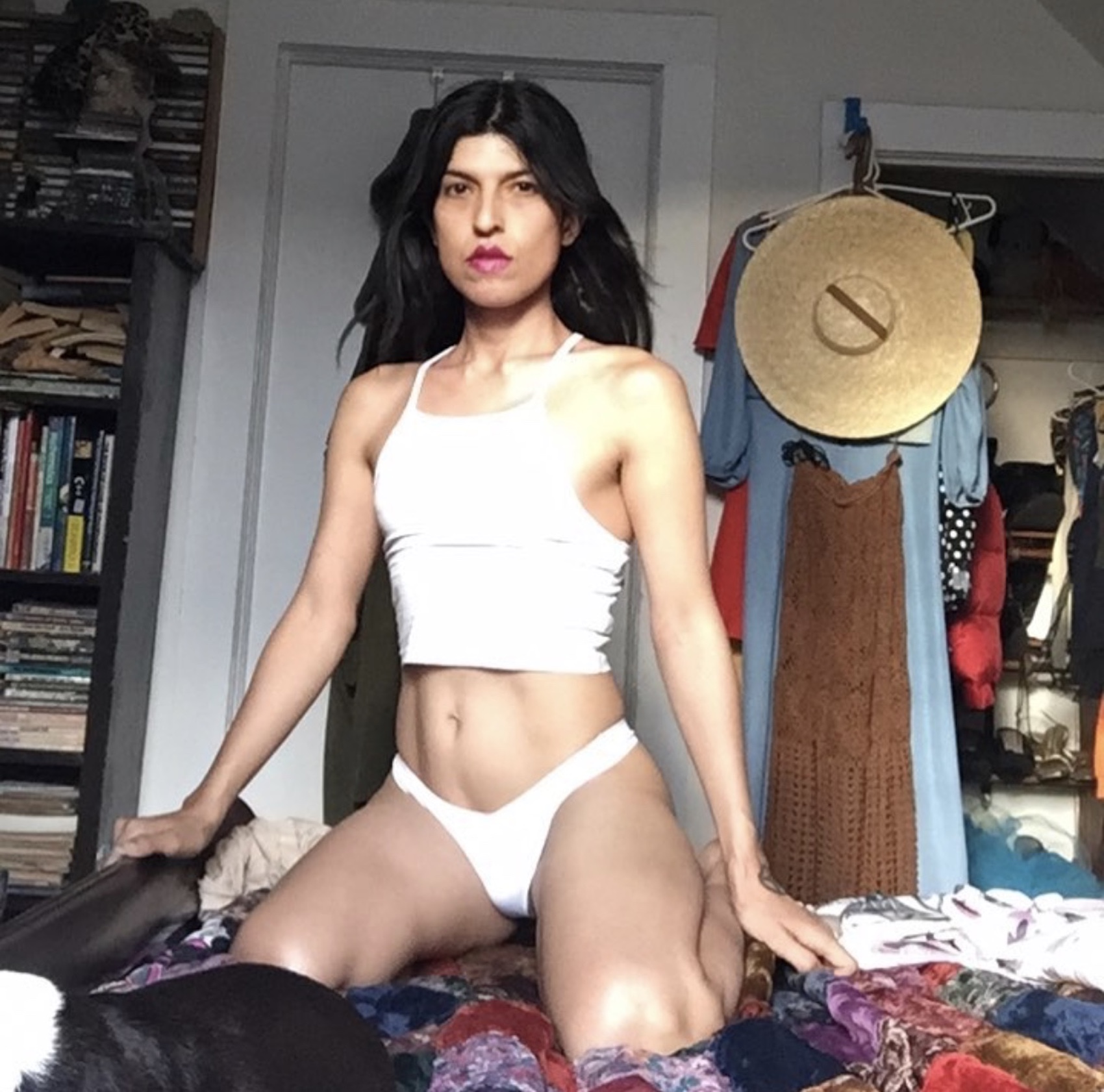
Though brands like Seventeen magazine, Dove, and Target have moved away from photo retouching, I find myself doing the opposite. In exploring my femininity as a trans woman, I’ve discovered plenty to be happy about, but with transitioning can come a crushing sense of gender dysphoria—of not being physically feminine enough. My apologies to The Brands, but no amount of body-positivity platitudes can ease the discomfort I feel when doing even the most mundane activities, like taking selfies. No. I need all the help I can get in embodying the woman I was born to be. I need the hard stuff. I need Facetune.
Facetune is a photo-editing app mainly used to alter selfies. It’s especially popular among many trans women I know because it can not only smooth skin and remove blemishes, but reshape the face or body and conceal any trace of potentially triggering “masculine” features. For many trans women like me, retouching isn’t necessarily about being more beautiful—it’s about reclaiming the narratives of our bodies. Photo editing tools like Facetune allow me to see how I might look untouched by testosterone; they allow me to set aside my anxiety and get back to what many of us millennial girls are doing: posting selfies.
Videos by VICE
I discovered Facetune in early 2016 after Khloe Kardashian praised the app on Chelsea Handler’s Netflix series, Chelsea Does. As Khloe gushes to Chelsea and Leah Remini over a cheese platter, “Facetune is the best thing to bring to the table. It’s life-changing.”
Chelsea objected, saying she was “opposed” to “fixing your face,” and that “your face is basically gone by the end of it.” Leah backed Khloe up, suggesting that it doesn’t matter whether retouching is “real” or not; what matters is that it helps users actualize what they see in themselves, and what they want others to see.
Khloe and Leah’s praise of Facetune came at a time when I had one foot in the closet and the other out. Their discussion made me think about how I viewed my own body, what possibilities were available for me to explore how I wanted others to view me, and how I wanted to view myself. I downloaded the app, and Khloe and Leah’s words immediately rang true: My life was changed. Facetune opened my eyes to the possibilities of my own face and what transitioning could hold for me—possibilities I may not have had a way to see otherwise.
Trans women often report experiencing a dissociation from their bodies and a sense of not being “real” or “woman” enough. To gauge the use of Facetune among those who aren’t famous and cis, I asked other trans women to spill the tea about why they retouch their selfies, and how apps like Facetune have impacted their lives.
Iiia, a trans woman from Los Angeles, told me, “I feel very feminine, but my face isn’t catching up with my body, so all I see is a man staring back at me in the mirror! I use Facetune to prevent myself from feeling dissociated from my own face.”

“I already don’t feel like I’m ‘real’, and Facetune, ironically, ameliorates that,” liia says.
While Facetune may not be literally the “realest” option, as it’s confined to the digital world and social media, some of the people I spoke to for this story say remains a major source of respite for many trans women when surgical and aesthetic procedures are inaccessible. Corinne, another LA-based trans woman, says, “I think Facetune gives virtual access to confidence we, as trans women, otherwise can’t acquire. It’s like gender-affirming surgeries: Facetune is just helping us align ourselves physically with the image of women we are in our mind’s eye.”

For others, retouched images are used as potential “after” shots to set goalposts for gender-affirming surgical procedures. “I’m showing my facial feminization surgeon a pic of me Facetune’d because I don’t want to look like a different person—just like an HD version of myself,” said Noelle, a trans woman from Chicago.
Facetune is a double-edged sword, however—just like many of the other limited tools we’re provided to combat dysphoria. Noelle explained, “Honestly, I love Facetune and LINE Camera [another popular photo editing app] so much, and use both for selfies to make me feel less dysphoric. However, I feel like using those also makes me more dysphoric because I’m reminded I don’t actually look like that—yet. But I’m still hooked and would never post a selfie without running it through an editor.”
Unfortunately, some cis people see Facetune as a tool for deception, perpetuating a common transphobic stereotype: That we’re frauds out to trick cis people into thinking we’re cis women. “That kind of mentality is dangerous and follows us into other areas of our lives when we’re simply trying to be respected and perceived as the gender we are,” Corinne said. The truth is that I, and the trans women I spoke with, don’t use it to pull the wool over anyone’s eyes, but for self-empowerment.
When I take a selfie, I run it through at least one round of retouching to soften the squareness of my jaw or hide the shadow that haunts my upper lip, even after two years of painful electrolysis and laser hair removal. These tweaks aren’t conspicuous overhauls of my face or body, but they make all the difference in how I perceive my digital self. Without retouching, I might never feel comfortable posting selfies on Instagram or sharing my life with the world because I would see what dysphoria causes me to perceive as gendered flaws. With retouching, I don’t see flaws—I see possibilities.






































